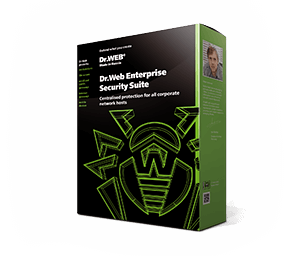Anti-virus engine non-signature technologies
The company's software incorporates a proprietary anti-virus engine — only a few companies in the world have their own engine; most companies license one from other anti-virus vendors.
Learn more
Preventive protection technologies
Dr.Web can recognise suspicious programs that have similar behaviour patterns and block their operation even if their definitions haven't yet been added to the Dr.Web virus database.
Learn more
The Dr.Web virus database
Pure signature-based anti-viruses—i.e., those that detect malware only by using the definitions in their virus databases—died out in the 1990s with the appearance of ever-changing polymorphic viruses that could not be detected by their signatures (by the way, this is what led to the emergence of the Dr.Web anti-virus).
If anti-viruses today were able to recognise new viruses only according to the entries in their virus databases, those databases would be so large that no computer’s memory could accommodate them, scanning would take ages, and PC performance would be severely handicapped.
How does Dr.Web’s one-of-a-kind virus database work?
The global update system
Like any other program, an anti-virus needs to be updated frequently. The global Dr.Web virus-monitoring system collects virus samples all over the Internet. As soon as an update is released, anti-viruses can retrieve it from several servers located at various points of the globe. Urgent updates are released as soon as the analysis of a new threat is complete.
Learn more
Curing viruses
An anti-virus should prevent systems from getting infected.
But if an infection occurs, it should neutralise the malware that has managed to get into the system.
How does Dr.Web accomplish this task?
Self-support
When your system has been infected in spite of your best efforts or it has been infiltrated by a malware program that has been specially designed to neutralise your anti-virus, your anti-virus protection system’s ability to withstand infection comes to the fore.
Dr.Web is immune to any attempts by malicious programs to disrupt its operation. Dr.Web SelfPROtect is a unique anti-virus component that maintains anti-virus security.
Find out more



